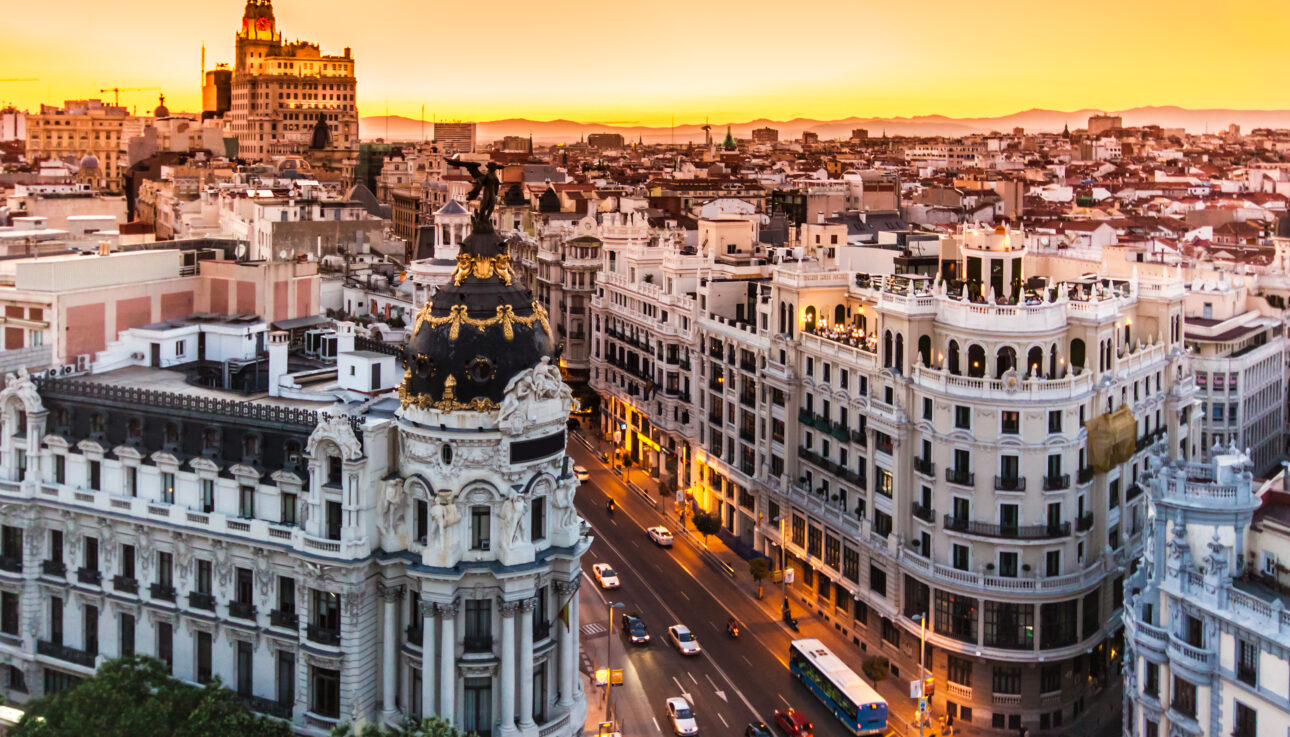Table of Contents
Introduction to Spain
There’s no doubt that Spain is one of the most visited countries in the world! Travellers can enjoy amazing amazing World Heritage Sites with fascinating histories to learn, enjoy delicious tapas and discover beautiful landscapes! And let’s not forget the many beaches of Spain. From the Costa del Sol on the mainland to the isolated and romantic Balearic islands and also the Canary Islands, all your travel dreams can come true in Spain! Architecture buffs can enjoy the masterpieces of Gaudí in Barcelona, gastronomers can enjoy the many tapas and the world-famous paella, and beach lovers will never be bored! This travel guide, brought to you from my many years of travel experience, will help you plan your vacation to sunny Spain!
Quick Information
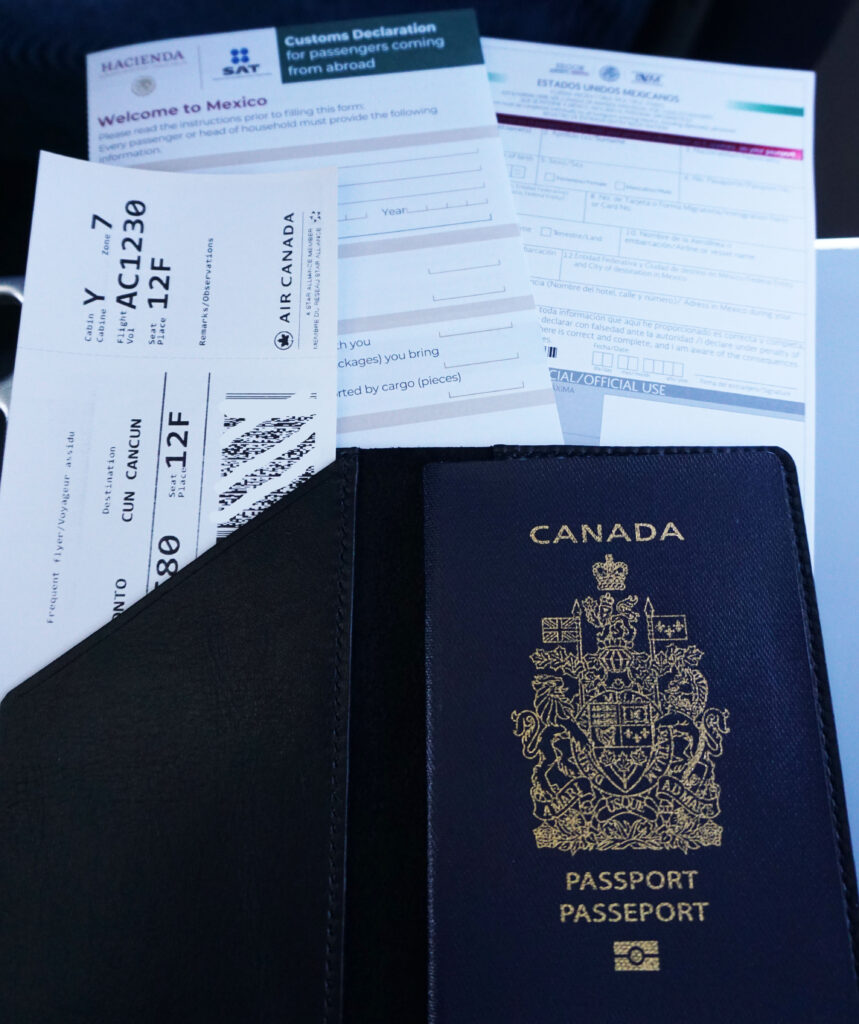
Currency: Euro. Click here to check the current exchange rate.
Electricity Socket: The standard voltage is 230V AC, and the frequency is 50 Hz. To avoid buying new adapters for every destination in the world, I recommend having a Universal Travel Adapter which can be brought on any vacation.
Entry Requirements: A valid passport is required for all travelers. The passport must expire 6 months or more after your return home. Spain is a member of the Schengen Agreement, which allows EU nationals unlimited visa-free travel. Travelers from North America, Australia and New Zealand can travel without a visa for up to 90 days. Citizens of other countries may need to apply for a visa beforehand. Click here to check the entry requirements which apply to your country of residence.
Staying connected:
- Wi-Fi can be found in most cafes, restaurants, hotels and hostels across Spain at no cost. In cafes and restaurants, as long as you buy something, they will allow you to access the Wi-Fi.
- If you’re looking for data while abroad, Airalo is the best eSIM company. Click here to view my article on how to have data abroad at an affordable cost.
- Traveler SIM cards, often preloaded with data, can be purchased from many companies. A few companies offering them are Movistar, Orange, Vodafone and Yoigo, among others. Some of those companies even have counters in the arrivals sections of most airports, so you’ll never be short on internet.
Safety: Spain is a very safe country to visit. Travelers need to take normal precautions at all times, which is common in any big city. Pickpocketing and scammers are the most serious issues that one can come across, however, with proper precautions, it should not be a problem.
My #1 tip when traveling in Europe: wear your backpack in front of you rather than behind you. That is one of the best ways to avoid theft. Another problem is tourists who enjoy the nightlife and do crazy things. Yes, the Spanish are big party fans! All-nighters are a daily occurrence in Spain.
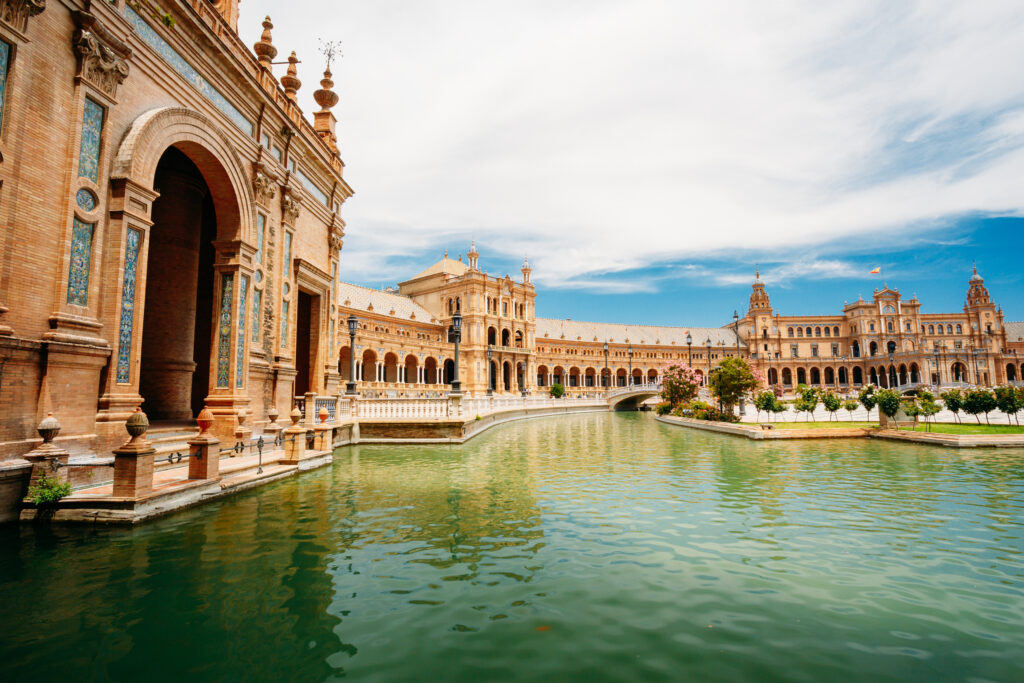
Language: The native language is Spanish, however, English is widely spoken across Spain, and there are lots of English-speaking tours. To better connect with the locals, I always recommend grabbing a phrase book and trying to learn the basics of Spanish.
Time zone: GMT + 1
Tipping: although not mandatory, tipping is widely practiced in Spain. Many restaurants include a gratuity on the bill of approximately 15%. If it shows on the bill, there is no need to tip above that. However, depending how satisfied you are with the service, servers appreciate a tip of around 5-10%. At hotels, it is nice to leave the housekeeper about 1 Euro per day if you are satisfied with the service.
PLANNING YOUR TRIP TO SPAIN
Getting to Spain

Spain is accessible from almost all corners of the world, with almost all means of transportation. For many travelers, it could be the start or end point of a long EuroTrip.
By air: there is never a shortage of entry points into Spain. Most international flights will land at Madrid-Bajaras International Airport or Barcelona El Prat International Airport. Travellers coming from other parts of Europe can also fly into Valencia, Malaga, Alicante or Seville. Travellers heading to Spain for its beaches can fly from other parts of Europe, or also from mainland Spain, into Palma de Mallorca, Ibiza, or the Canary Islands.
By rail: Spain is accessible by rail from neighbouring France and Portugal. The Spanish national rail company is RENFE, and their network links all the major towns and cities at speeds of up to 350 km/hour.
Travelling Around Spain
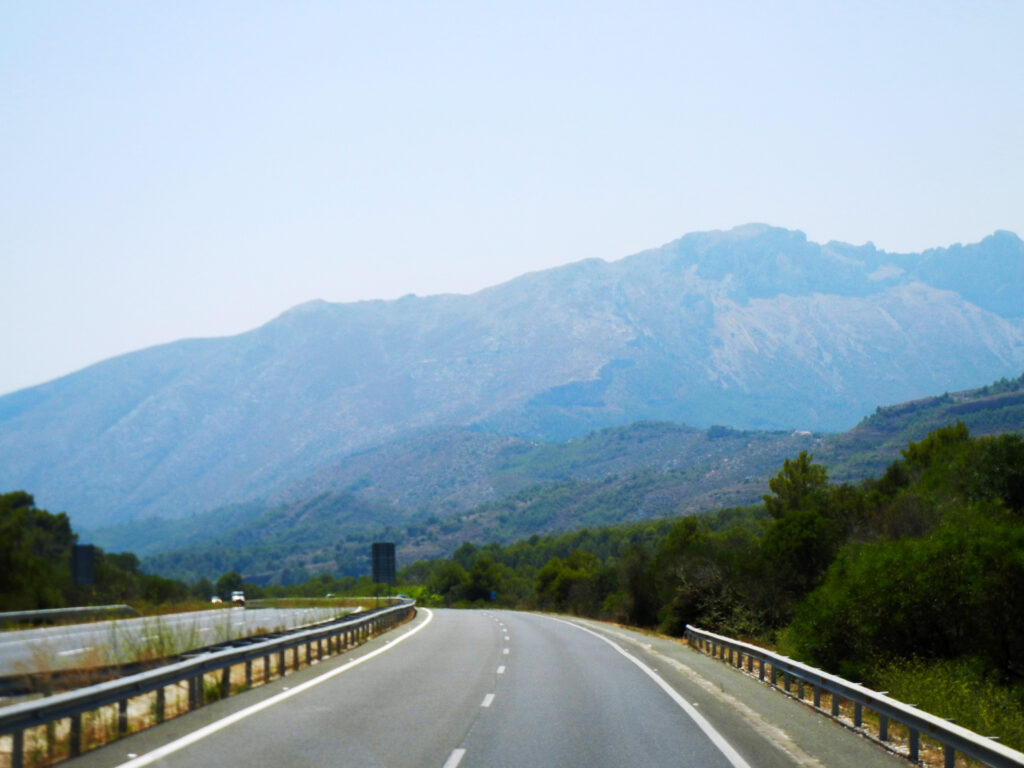
By rail: Spain’s RENFE trains link the major cities in great comfort. In some cases, taking the train is actually faster than flying or driving. For travellers looking to discover the hidden gems, there are many other mainline trains and local suburban trains, which connect many small cities and villages with the bigger cities. It is recommended to book tickets in advance, as Spain is a very popular destination, and seats on RENFE trains can fill up fast.
By Guided Tour: If you’re looking to get the perfect VIP experience travelling around Spain, a guided tour will be a “one stop shop” for your vacation to Spain. Transportation, 4-star accommodation in the city centre of each city, sightseeing, daily breakfast and some dinners are all included in one price. Certain attractions may be an extra cost, but the value you get is worth every penny! Skip the lines at busy tourist attractions like the Sagrada Familia or the Alhambra, and also bypass the main thoroughfares to catapult you towards the emerging chefs and artists who will define the Spain of tomorrow.
By plane: Spain’s national airline, Iberia, links Barcelona and Madrid to most of the cities in Spain, as well as the Balearic and Canary Islands. Air Europa is another Spanish airline based in Madrid. However, the costs of flying can be higher than taking a train. It is best to discover mainland Spain by train and fly from the mainland to the Balearic or Canary Islands.
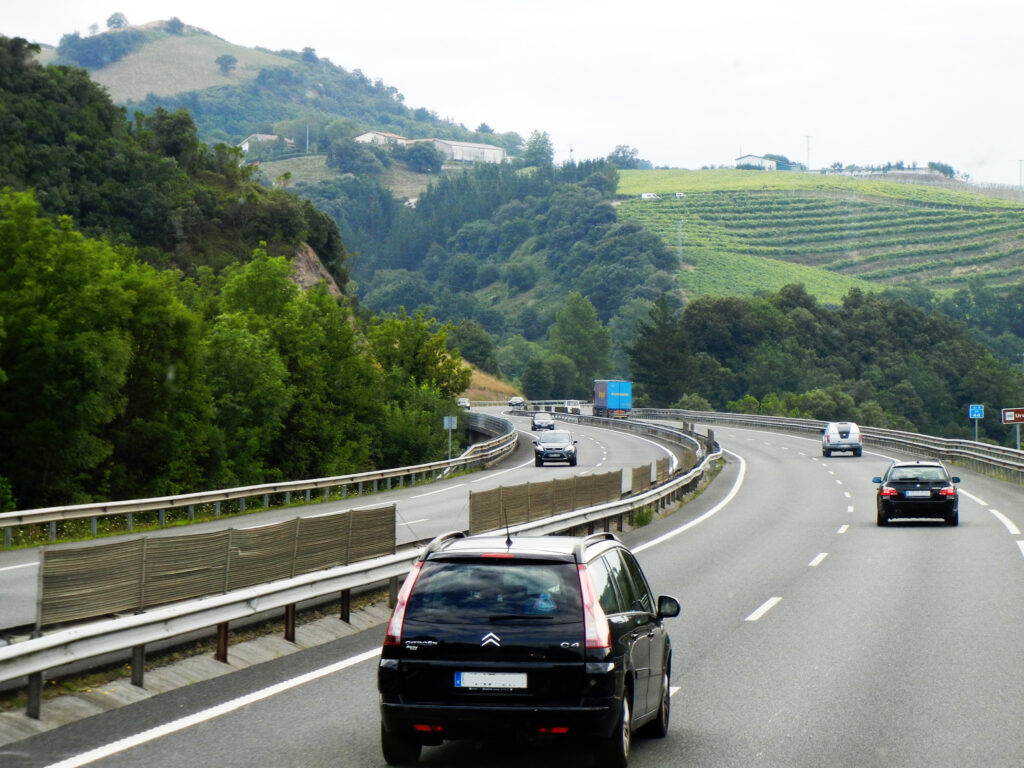
By car: for perfect freedom and self-discovery tours, you could rent a car. However, there are quite a few cons to renting a car:
- Public transit in Spain’s cities is very fast and efficient. And in smaller cities like Seville or Cordoba, most places are within walking distance. It is a waste of time to drive through Spain’s cities, and also a waste of money to pay the parking fees at your hotel or hostel.
- Finding parking in big cities can be a nightmare. It is easier to find parking in Canadian cities than in European cities. Adding all these costs can cost more than taking the train between two cities, then public transit in the city.
- Most cars in Europe are manual. For those who do not drive manual, an automatic car can cost up to double the price of a manual car. This is because automatic cars are not popular in Europe, hence supply is limited.
When to Travel to Spain
Spain is a year-round destination. However, the place(s) you visit may have significantly different temperatures at different times of the year:

Low Season (November to February): winters in Spain are the coldest, but surprisingly, bring temperatures of 9-15 degrees celsius. At the same time, tourist crowds are very low, which makes flights, train tickets and accommodation cheaper. At the same time, travellers looking for warmer weather can head to the Canary Islands, where the daily maximum temperature reaches 20 degrees celsius.
Shoulder Season (March-May and September-November): the shoulder months are the perfect time to visit Spain. The weather on mainland Spain, the Balearic islands and also the Canary Islands varies between 20-30 degrees celsius. Flights and accommodations are also lower during shoulder season (a little bit higher than the winter, but affordable), and tourist crowds are also low.
High Season (June-August): Summers in Spain are mainly hot, dry and sunny with warmer temperatures on the Mediterranean coast and inland, and slightly milder temperatures in the north. High season is also the busiest times, as school is not in session and most locals take their vacations in August. At that time, huge tourist crowds flock to Europe. The weather is best if you enjoy the heat, however, flights and hotels tend to be higher priced. If you will be travelling to Spain in the summer, it is best to book 4-5 months in advance.
Budgeting
The price of transportation and accommodation depends on the season that you’re traveling in. Here is a breakdown of approximate costs:
Accommodation Per Night
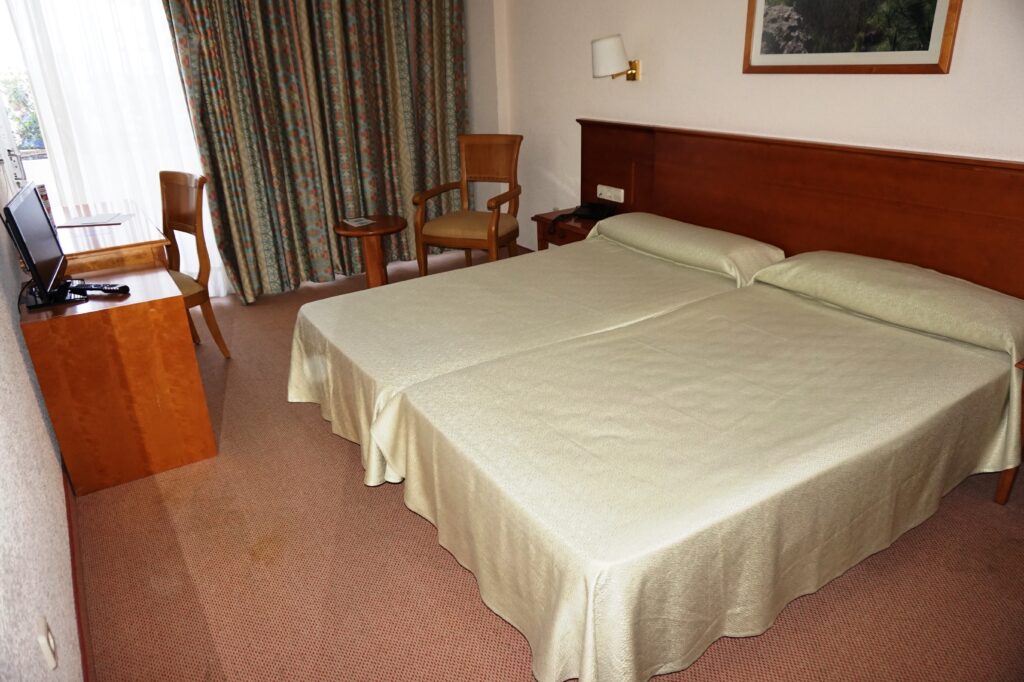
| Hostels | €20-35 for shared dorm €60-80 for private dorm |
| Mid-range hotels | €80-180/night |
| High-end hotels | €300-500/night |
Food

Many restaurants in cities throughout Spain would cost approximately €10 for an appetizer, and €15-30 for an entree. This is pretty similar to the costs in big Canadian and American cities, except that it is in Euros.
If you’re celebrating an occasion, many upscale restaurants which require a dress code tend to have a set menu with prices between €100-180.
Transportation in and Between Cities

Public Transit in Cities | Around €2/trip Around €13 for a day pass The more days you buy a pass for, the cheaper it gets per day. |
| Sightseeing tours | Around €40 for a day pass |
| Inter-city trains, including RENFE | €50-150 |
| Regional Trains (to small cities and villages) | €15-45 |
Attractions in Cities

- If you are planning to visit the top worldwide famous attractions such as the Sagrada Familia, the Royal Palace of Madrid or the Mosque of Cordoba, it is recommended to book a skip-the-line ticket ahead of time. The lineups for walk-ins at those attractions can easily surpass one hour, even in low or shoulder season.
- Prices for attractions range between €10-25, or €30-60 for skip-the-line tickets including a guided tour.
- If you’re a sightseeing buff who enjoys the top tourist attractions, you can save up to 50% by buying a Go City Pass. To see if it’s worth it, add the prices of all the attractions you are looking to visit and then compare that to the cost of the Go City Pass.
Where to Stay in Spain
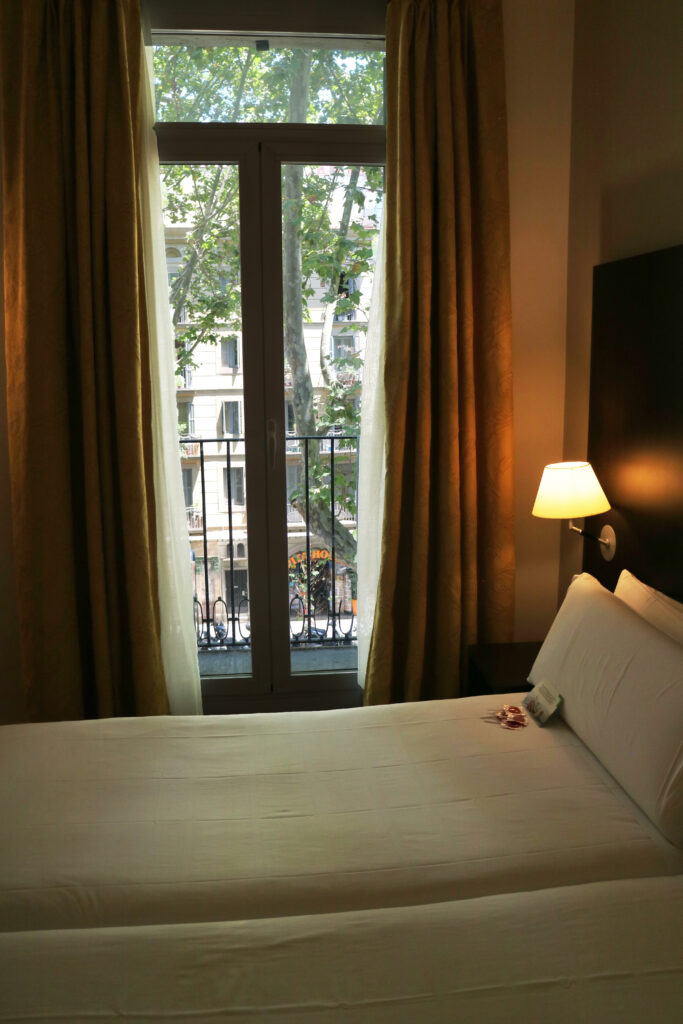
There are endless options for accommodation in Spain. From hostels where you can meet like-minded travelers to luxury hotels, there is never a shortage of options. It is best to book in advance, especially if traveling during peak season.
Teo’s Travel Tip: there are several factors to consider before booking the cheapest hotel in Europe, or even the cheapest room category. Click here to read my article on what you need to know when booking a hotel in Europe.
Top Hotel Brands in Spain
Top Hostel Brands:

